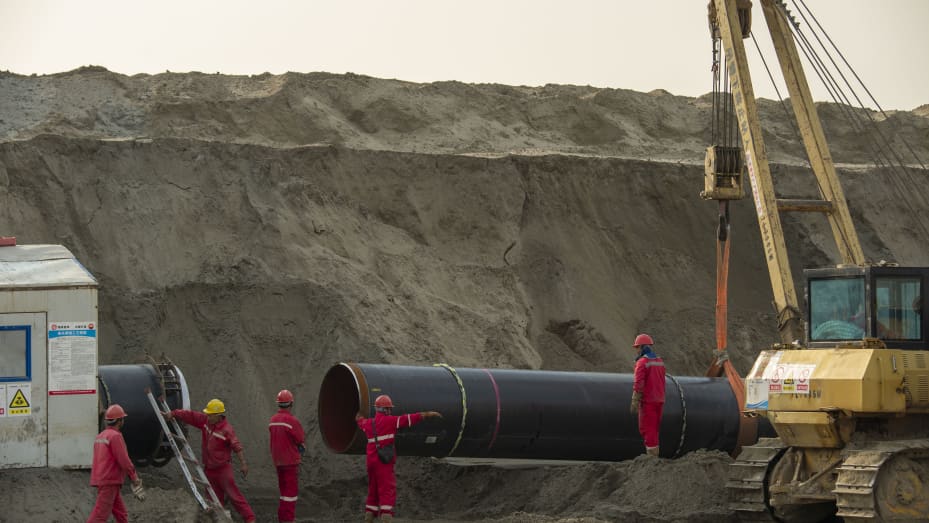
China and Russia are in the final stages of building a gas line that will bring gas from Siberia to China.
The power of Siberia began delivering natural gas to northern China in December of 2019.
Past the capital city of Beijing, the line goes down the eastern side of the country to its final destination. The middle phase began operations in December of 2020 and the final southern section is expected to begin gas deliveries in 2025.
State-owned energy companies from Russia and China have been working on the project for years.
Moscow faces the threat of losing natural gas purchases from the European Union, a big customer that aims to cut two-thirds of its Russian gas imports.
China is trying to find new sources of energy. Beijing didn't condemn Moscow for invading Ukraine.
There are many energy options for Beijing, and the scale of the China-Russia gas line shows it.
According to China customs data accessed through Wind Information, natural gas imports through the Russia-China pipelines have only totaled $3.81 billion since December of last year.
In the first half of this year, the pace of Chinese purchases almost tripled from a year ago.
The data showed that China's gas imports from Turkmenistan were up by more than half a billion dollars.
Natural gas is a small part of China's energy imports.